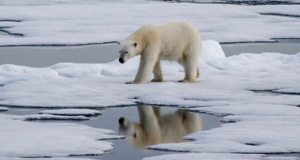From Earth Common Journal VOL. 5 NO. 1Media Initiation in Environmental Education: An Indian Model of Environmental PedagogyBlended Learning Methods Through SEEDSEED follows blended learning experience through various projects both online and offline. It encourages students to feel the soil and show compassion towards the surroundings they live in by engaging in environmental activities. The educational zones in Kerala are divided into 38 Education Districts across 14 Revenue Districts. SEED project is implemented in whole throughout 38 educational zones targeting students from the age group of 10-17 years. The idea of SEED actually came up after identifying that environmental degradation is one of the major issues faced by present generations. The students in school, who are future leaders, will lack knowledge and information in order to tackle the environmental issues since the education system focuses on job oriented. SEED also provides a syllabus based learning experience. ‘Season Watch' is one of such projects initiated by SEED. The SEED schools are asked to observe the changing seasons by monitoring the leafing, flowering, and fruiting of trees. SEED clubs help to record their findings and results are published in a yearly handbook and also presented in an audiovisual format. The results and findings on season changes on plants are directly and indirectly used for curriculum based classes, hence fruitfully making use of the time they spend to do the project. Moreover, class assignments are created using the results and data collected through this project that excites the students in doing these assignments. In the same way, ‘SEED Reporter' is another project part of SEED, which provides students a chance to report on developmental stories from their locality, the selected stories among which are published in newspapers. SEED basically functions as the platform providing green clubs and eco-clubs for schools by providing professional training, as well as financial and moral support. Reaching the vast student community was a great challenge faced by Mathrubhumi. They appointed in-house volunteers known as SPOCs (Single point of contact) who work at the regional level to collect data, coordinate, and spread the message. The SPOC may be anyone from the organization, regardless of position or hierarchy. Later on, they developed proper structure so that one SPOC controlled a maximum of 10 schools. Each of the participating schools has a SEED club with a teacher co-ordinator. SEED club members lead the activities under the supervision of the teacher co-ordinator. This made them receive feedback in a more convenient way. The School SPOCs periodically visits participating schools and obtain their reports along with evidence. They report the progress to the Education District SPOCs, who in turn will report to the Revenue District SPOC (Seed, 2013). A teacher co-ordinator was selected from each school who controls the activities of the school. Every year, SEED conducts district level teacher training programs through which agendas are set and evaluated. The projects of SEED aim at multi modal communication through the following ways:
Apart from state owned and private schools, SEED is also implemented in central government owned schools like Jawahar Navodaya Vidyalaya, where co-education is provided within a fully residential system. Such is in the case of Jawahar Navodaya Vidyalaya, where Wayanad successfully maintained bio gardens and farms by which they produced organic vegetables and fruits for daily purposes. In the year 2011, this school won the "Vishishta Haritha Vidyalaya Award" (Supreme Greenery School Award) which is the highest reorganization given to the school for its outstanding activity throughout the year (Mathrubhumi, 2011). The Shreshta Haritha Vidyalayam Award (Prime Greenery School Award) is given out across 14 revenue districts; one school from each district will be awarded the ‘Shreshta Haritha Vidyalayam Award. Out of the 38 education districts, three schools in each educational district (total 114 schools) will be awarded Haritha Vidyalayam Award (Greenary School Award). An Individual award is also distributed to the best teacher coordinator and student for their work. The media coverage and encouragement from teachers made students stand for the rights of nature. These media organizations, support the philosophy of "catching them young." They use the potential of the wide platforms (print, radio, television and web) available to reach the audience as well as the students. They sought to engage in social reality and environmental issues. They became the carriers of messages to the public and created a sense of self-esteem and responsibility towards the environment. The importance of such school based environmental communication pedagogy is very vital in a country like India. These evidence based results show that potential stakeholders with school management and curriculum policy makers could bring impact among society via students. The existence of the child-centred, school—news media collaborations in environmental education provided students with opportunities to raise critical questions, to apply logical thinking on environmental issues, and to persuade the development of their own creative and constructive solutions. ConclusionThe academia of 21st century holds significant and substantial opportunities to explore diverse routines with students in order to make learning appealing and thriving. Sampson (2007) proposes a list of literacies to be made a part of present educational curriculum—ecoliteracy, financial literacy, media literacy, emotional literacy, information literacy, aural literacy, visual literacy, multicultural literacy, the arts and creativity, physical fitness and nutrition, cyber literacy, and global competencies. Kellner (2006) puts forward that these literacies and competencies are necessary conditions to equip people to participate in the local, national and global economy, culture, and polity. Kellner places further emphasis on crucial links between literacy, democracy, empowerment, and participation and "without developing adequate literacies differences between haves and have notes cannot overcome and the individuals and groups will be left out of the emerging economy, networked society and culture" (2006). All the aforementioned media initiated projects in Kerala provided the idea about the "environment" which was constructed by the media. It can be argued that these images and the way of understanding the environment and nature are mediated through these projects. The term "environment" does not only include the natural beauty, aqua or agriculture, but also the whole ecology where human and nature coexist. In this context, issues of tribe—their land and identity—politics of neglect and negotiation takes place. While the educational values are spread with the environmental communicative messages, future citizens tend to seek disclosures and dialogues for such spaces. Theoretically, these media supported projects encourage "public participation" in environmental activities. They encourage students to be motivated and transfer the lessons they learned from school to home and to society. Nalla Paadam and SEED calls attention from students to involve in contemporary environmental issues by conducting workshops, quiz competition and study classes. For example, the concept of youth parliament was initiated by SEED to bring out the real political concerns regarding environment for discussion among student leaders. These student level projects mobilizes the media and in depth community to gather support which will result in a change. This type of learning paves the way to effective activism for the environment. These types of protests can result from motivated communication which will result in meaningful questioning. AuthorsNithin Kalorth is pursuing his PhD from the School of Social Sciences in Mahatma Gandhi University, India. Rohini Sreekumar is pursuing her PhD from the School of Arts and Social Sciences at Monash University. ReferencesAbout seed. (2013, May 7). MBISEED. Retrieved July 26, 2015, from http://www.mbiseed.com/view_page.php?id=6 Archie, M. (2003). Advancing Education through Environmental Literacy. Alexandria, Va.: Association for Supervision and Curriculum Development. Bijoy, C. (2006). Kerala's Plachimada struggle. Economic and Political Weekly,XLI(41). Cantrill, J., & Oravec, C. (1996). The Symbolic Earth: Discourse and our creation of the environment. Lexington, Ky.: University Press of Kentucky. Carleton-Hug, A., & Hug, J. (2010). Challenges and opportunities for evaluating environmental education programs. Evaluation and Program Planning. Cox, J. (2006). Environmental Communication and the Public Sphere. Thousand Oaks: Sage Publications. Dewey, J. (1997). Democracy and Education. Champaign, Ill.: Project Gutenberg. Dyment, J., & Bell, A. (2006). Active by design: Promoting physical activity through school ground greening. Children's Geographies, 463-477. Flor, A. (2004). Environmental Communication: Principles, approaches, and strategies of communication applied to environmental management. Diliman, Quezon City: University of the Philippines, Open University. Gardner, H. (1999). Intelligence Reframed: Multiple intelligences for the 21st century. New York, NY: Basic Books. Guha, R. (2011, January 31). A nation consumed by the state. Outlook India. Jan 31, 2011. Retrieved July 27, 2015, from http://www.outlookindia.com/article/a-nation-consumed-by-the-state/270136 Heller, P. (1995). From class struggle to class compromise: Redistribution and growth in a South Indian state. J. of Development Stud. Journal of Development Studies FJDS, 31(5), 645-672. Hopkins, C. (2015). Beyond the decade: The global action program for education for sustainable development. Applied Environmental Education & Communication, 132-136. Kellner, D. (2006). Technological transformation multiple literacies and the revisioning of education. In J. Weiss, J. Nolan, J. Hunsinger, & P. Trifonas (Eds.), International handbook of virtual learning environments. Dordrecht: Springer. Milstein, T. (2009). Environmental communication theories. In S. Littlejohn (Ed.), Encyclopedia of communication theory (pp. 344-349). Los Angeles, Calif.: Sage. MacBeath, J. (Speaker) (2013, January 1). Introduction to teaching and learning. Coursera Online Course. Lecture conducted from Commonwealth Education Trust. Misra, S. (2010, December 10). State of Endosulfan. Down to Earth. Retrieved June 26, 2015, from http://www.downtoearth.org.in/coverage/state-of-endosulfan-2400 Nair, G. (2003, December 27). Quality of education on decline in Kerala. The Hindi BusinessLine. Retrieved June 26, 2015, from http://www.thehindubusinessline.com/2003/12/27/stories/2003122700511700.htm Nalla Paadam News. (2015). Manorama Online. Retrieved June 15, 2015, from http://specials.manoramaonline.com/Education/2015/Nallapaadam-2015/article-2.html O'Dwyer, D. (2014, March 7). Kerala, India: They don't call it 'God's Own Country' for nothing. Washington Post. Retrieved June 26, 2015, from http://www.washingtonpost.com/lifestyle/travel/kerala-india-they-dont-call-it-gods-own-country-for-nothing/2014/03/06/12e1d956-98f4-11e3-b88d-f36c07223d88_story.html Pulla, P. (2013, June 1). Kerala's Endosulfan tragedy. Open The Magazine. Retrieved June 26, 2015, from http://www.openthemagazine.com/article/nation/kerala-s-endosulfan-tragedy Ram, A., & Pereira, C. (2014). Role of SEED project in propagating environmental awareness for environment conservation: A study on secondary school students of Kerala, India. IOSR Journal of Research & Method in Education (IOSRJRME) IOSR-JRME, 4(4), 09-14. Rogers, R. (1998). Overcoming the objectification of nature in constitutive theories: Toward a transhuman, materialist theory of communication. Western Journal of Communication, 62(3), 244-272. Sampson, M. (2007). Multiple Literacies in the 21st Century: The twenty-eighth yearbook: A peer reviewed publication of the College Reading Association 2006. Logan, Utah: College Reading Association. Schwarze, S. (2006). Environmental melodrama. Quarterly Journal of Speech, 92, 239-261. Seed. (2013). MBISEED. Retrieved June 26, 2015, from http://mbiseed.com/view_projects.php?id=1 Senecah, S. (2004). The trinity of voice: The role of practical theory in planning and evaluating the effectiveness of environmental participatory processes. In S. Depoe, J. Delicath, & M. Elsenbeer (Eds.), Communication and Public Participation in Environmental Decision Making. Albany: State University of New York Press. Sinha, S., Jangira, N., & Das, S. (1985). Environmental Education: Module for Pre-Service Training of Social Science Teachers and Supervisors for Secondary Schools (W. Jacobson, Ed.). UNESCO Division of Science, Technical and Environmental Education. Spring, J. (2007). Ways of seeing and a global core curriculum. In A New Paradigm for Global School Systems: Education for a long and happy life. Mahwah, N.J.: Psychology Press. Suchitra, M. (2014, September 10). Kerala tribals stand and protest for land. Down to Earth. Retrieved June 26, 2015, from http://www.downtoearth.org.in/news/kerala-tribals-stand-and-protest-for-land-46275 Talay, I., Gunduz, S., & Akpinar, N. (2004). On the status of environmental education and awareness of undergraduate students at Ankara University, Turkey. International Journal of Environment and Pollution IJEP, 293-293. Tanner, T. (1980). Significant life experiences: A new research area in environmental education. The Journal of Environmental Education, 20-24. Tourism Beckons (2004, May 11). The Hindu. Retrieved from http://www.thehindu.com/edu/2004/05/11/stories/2004051100040100.htm on 12 June 2015 Vijay, A. (2015, January 10). Hear these original inhabitants. The Hindu. Retrieved June 16, 2015, from http://www.thehindu.com/opinion/open-page/open-page-hear-these-original-inhabitants/article6775668.ece Vosniadou, S., Walberg, H., & Paik, S. (2001). Effective educational Vosniadou, S., Walberg, H., & Paik, S. (2001). Effective educational practices. In How Children Learn (pp. 24-47). Geneva: The International Bureau of Education—IBE. Wayanad Jawahar Navodaya backs Vivishta Haritham Award. (2011, March 29). Mathrubhumi, p. 1. Wells, N. (2000). At home with nature: Effects of "Greenness" on children's cognitive functioning. Environment and Behavior, 775-795. Suggested Reading from Inquiries Journal
Inquiries Journal provides undergraduate and graduate students around the world a platform for the wide dissemination of academic work over a range of core disciplines. Representing the work of students from hundreds of institutions around the globe, Inquiries Journal's large database of academic articles is completely free. Learn more | Blog | Submit Latest in Environmental Studies |



















